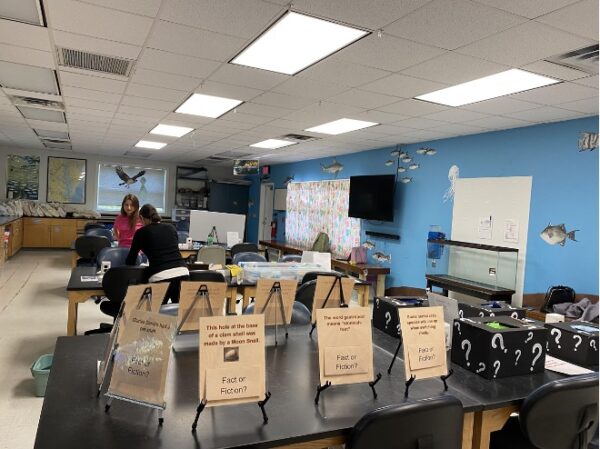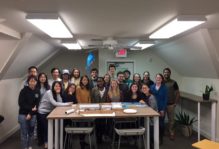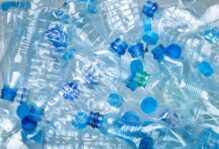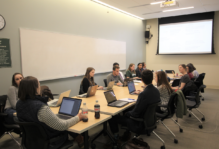Discovering the Connection Between Marine Science, Climate Change and Science Communication
By Trinity Bea ’22 and Lindsey Smith ’23
Hello! Our names are Trinity Bea and Lindsey Smith. Trinity is a senior, majoring in neuroscience, while Lindsey is a junior biology student. Prior to becoming Sustainability Ambassadors, Trinity attended a marine science governor’s school in high school, and Lindsey completed a 2-week marine science field course at the Virginia Institute of Marine Science (VIMS) Eastern Shore Laboratory. Trinity will also be attending the School of Education to become a biology teacher. Both of us applied to join the William & Mary Sustainability Ambassador program in hopes of gaining more experience in science education and becoming more involved with the VIMS community.
As William & Mary Sustainability Ambassadors, we worked on the VIMS Discovery Labs. We collaborate with the Chesapeake Bay National Estuarine Research Reserve (CBNERR) at VIMS to educate and inspire school-aged children, as well as other members of the public, on the effects of climate change. Through hands-on activities, we were able to explain how climate change affects different marine organisms or processes in an engaging manner. We made informational posters and planned games or mini-labs.
While teaching guests about the consequences of climate change, such as ocean acidification, changing migratory patterns, etc., we got to learn more about marine ecosystems and climate communication. We were honored to have guest speakers from the VIMS community every month who gave more specialized information on various topics. Each month had a unique theme: January was hurricanes, February was pole-to-pole, March was eels, and April was seashells. The January lab was virtual, but the other three took place in a hybrid format in which attendees could either join us for the guest speaker on Zoom or come in person! After spending two years online, participants were excited to be back in person. Likewise, we were eager to engage with participants more and talk one on one with them about the different activities and lessons. We tried finding and designing activities that were both COVID-safe (i.e. no straws, not too many people touching the same things, etc.) and able to be done inside (i.e. no races).
As Sustainability Ambassadors, it was our job to create “climate corners” for all four labs. This consisted of making a poster relating the month’s topic to climate change, as well as hands-on activities to demonstrate and apply the climate concept. One challenge with our climate corners was figuring out how to answer difficult questions that guests would ask us. We explained what we knew, kept a positive attitude, and explained that we did not know all the answers. However, it was truly interesting hearing so many people interact with our poster and ask so many questions! It gave us hope that people are truly interested in how they can help with the climate change battle.
Along with the climate corner for our shell-themed lab in April, we planned eight activities to introduce participants to important aspects of shells. Some of the activities that we planned were seashell turtle craft, chopstick activity, egg strength activity, seashell bingo, matching shells game, a shell-building Lego activity, and seashells for people to see and hold. In the chopstick game, we stuffed snail shells with playdough and asked attendees to use chopsticks to try to remove the playdough from the shell. From this activity, participants were able to explain to us the purpose of shells as it relates to the protection of snails and other shelled species from predation. This activity was surprisingly more challenging than anyone expected it to be; drawing both the participants and volunteers to keep coming back! In the egg strength activity we placed bottle caps on the top and bottom of an egg then stacked textbooks on top to show how strong shells are. Our seashell bingo and matching game allowed participants to learn more about local shells in the Chesapeake Bay. Lastly, the Lego game was used alongside our climate corner to demonstrate how shells are made and how ocean acidification is impacting shells’ makeup.

Craft table! For our turtle shell craft, participants could paint a shell and glue pieces of paper onto it to make it into a turtle. They got to take their turtles home with them as a souvenir for the April Discovery Lab!
We found that the students were intrigued to learn about the different types of seashells found in Chesapeake Bay. It felt very fulfilling to see participants, no matter what age, engaged and enjoying the activities we planned.
From this experience, we have gained a greater appreciation and understanding for climate communication and marine science education. We are both extremely grateful for this opportunity!






No comments.
Comments are currently closed. Comments are closed on all posts older than one year, and for those in our archive.